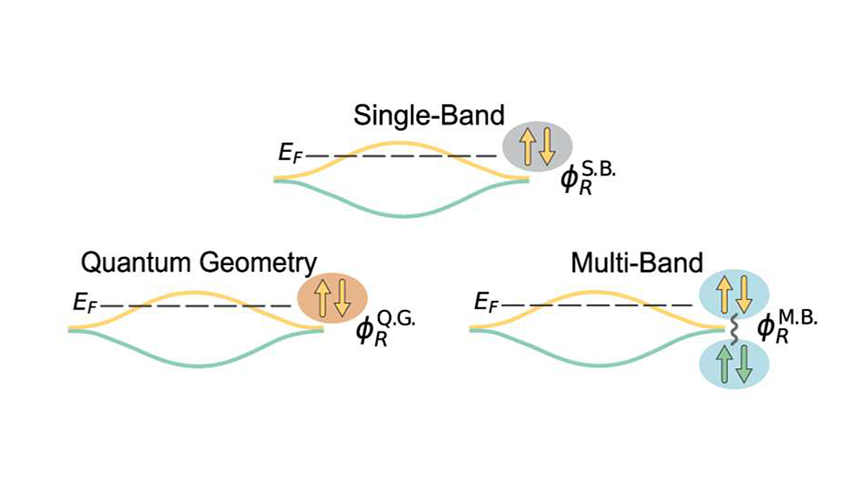Probing the Flat-Band Limit of the Superconducting Proximity Effect in Twisted Bilayer Graphene Josephson Junctions
While extensively studied in normal metals, semimetals, and semiconductors, the superconducting (SC) proximity effect remains elusive in the emerging field of flat-band systems. In this study, we probe proximity-induced superconductivity in Josephson junctions (JJs) formed between superconducting NbTiN electrodes and twisted bilayer graphene (TBG) weak links. Here, the TBG acts as a highly tunable topological flat-band system, which, due to its twist-angle-dependent bandwidth, allows us to probe the SC proximity effect at the crossover from the dispersive to the flat-band limit. Contrary to our original expectations, we find that the induced superconductivity remains strong even in the flat-band limit and gives rise to broad, dome-shaped SC regions, in the filling-dependent phase diagram. In addition, we find that, unlike in conventional JJs, the critical current 𝐼𝑐 strongly deviates from a scaling with the normal state conductance 𝐺𝑁. We attribute these findings to the onset of strong electron interactions, which can give rise to an excess critical current. By also studying the dependence of 𝐼𝑐 on the filling and twist angle across multiple samples, we further uncover the importance of quantum geometric terms as well as multiband pairing mechanisms in describing the induced superconductivity in the TBG flat bands as their bandwidth decreases. To the best of our knowledge, our results present the first detailed study of the SC proximity effect in the flat-band limit and shed new light on the mechanisms that drive the formation of SC domes in flat-band systems.
Read the whole article by Diez-Carlon et al. in Physical Review X. Part of a special collection on 2D materials.
